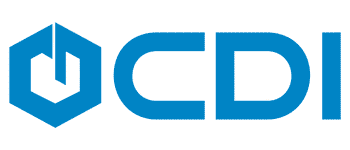Consultant's Corner: Effectively Manage Your Records and Master Compliance
- Dec 4, 2018
- 5 min read
When it comes to your Laserfiche Records, can you ensure you are meeting compliance regulations? In this month’s issue, we sit down with Kyle Knebel, Consultant, and Trainer at CDI to discuss some of the most recognized best practices for managing records in Laserfiche.
Laserfiche Records Management is a solution that allows institutions to preserve and identify records of fiscal, legal, and historical value. Policy adherence ensures documents are in line with established compliance rules and regulations. In this article, Kyle highlights why Records Management is useful, how to manage records, retention schedules, permissions questions, and more.
What makes Laserfiche Records Management an effective solution for tracking record life-cycles?
Kyle shares, “Records Management, is a standards-based solution that allows specially designated Laserfiche users to act as a ‘Records Manager’ to formally manage those documents identified as ‘records’ and allows them to track those records through their document ‘life-cycle.’ It is effective because it can help ensure that records meet regulatory compliance requirements and prove that they are being removed or retained appropriately.”
Can you explain the types of actions performed on active records?
Kyle begins by first, “Defining an ’Active record;’ these records should be easily accessible, well-organized, and retrievable by the right people at the right time. Any document placed into a record folder is automatically a record, regardless of how it got there. The following are actions performed on active records:
Modification – Active records reside under the Records Management records series structure but are not placed under retention by the Records Manager. They function like any other documents. Users can perform actions like having metadata updated, pages added, viewed by users, etc.
Relocation – Documents not yet under a retention policy can be moved around in the Laserfiche Records Series structure as needed.
Close– A record, but more typically a record folder, can be “closed” to prevent modification. The contents of a closed record or record folder cannot change. A closed record folder will not allow:
Metadata Modifications
New document or folder creation
Deletion of document pages
Annotations added to pages
Data appended
Frozen – Individual records could be retained for legal purposes. When the records are frozen, they are taken out of the standard records management life-cycle until un-frozen. So, in effect, a frozen record will not be affected by any disposition actions performed on it or its parent record folder. However, freezing does not change its eligibility date.”
What best practices do you recommend for setting retention schedules using the records management tools?
According to Kyle, “There are a couple of best practices for creating and setting retention schedules on a record series.
When creating a set of retention schedules, name them generically, which allows for use across multiple Record Series. For example, a good retention schedule name is ‘Keep 5 years then Destroy’, or ‘Keep 3 years, 6 mo. Transfer, then Accession’.
When setting Retention schedules on the Record Series, apply it at the highest record series level possible, since any children of that record series will inherit the Retention Schedule, when creating new Record Folders.”
How is record cutoff determined?
Using Laserfiche Records Management, Kyle says, “There are many ways that cutoff is determined. Laserfiche RME can be configured to use the following cutoff properties:
Time
Event
Time + Event
Superseded
Disposition Action
Interval
Interval + Event
Cutoff Instructions are usually assigned at the Record Series level, the Records Folder level, or even at the Records level (not common). The records manager will manually cutoff a records folder or multiple records folders, and typically use the “Records Management Search” criteria in the Laserfiche client to find the appropriate records folders to be cut off, by event, date, or other schedule.”
Can you explain some considerations for implementing a Transparent Records Management solution?
Kyle shares, that “Often Records Managers prefer creating a records folder design that fits their records retention logic, rather than a design that meets the typical business rules for filing documents. Frequently, records managers file several different document types under one retention schedule. Business users might find it challenging to manage documents while trying to use a Records Folder structure. The two needs, Records Management vs. Business Management, will have conflicts.
The resolution came with the invention of Transparent Records Management (TRM). Using Laserfiche Workflow to store records in the Records Folders, and then creating shortcuts to those records in the standard business management folder structure, both users are satisfied.”
Kyle also reveals, “Some common considerations when building a TRM solution, which include:
Define all the document types that will be handled and create a list field so that users can easily pick the document type.
Design the TRM Workflow to move the document type to the appropriate Records Folder under the correct Records Series. The same workflow will need to create shortcuts in the appropriate business management folder structure (standard folders).
Configure security so only Records Managers can browse the Records Series and records folders yet allow business users to open record shortcuts from their business folder view.”
What permissions are needed to manage records, and how do you ensure that the records follow retention schedules?
“Records Managers need to be assigned the ‘Records Management’ privilege on their Laserfiche trustee account.” Kyle tells us, “This setting allows the designated individual(s) to take Records Management actions within the Laserfiche client and define Records Management properties in the Laserfiche Administration Console.
Also, Users who are not Records Managers can receive limited Entry Access rights to perform specific Records Management actions like:
Set Last Review Date
Close/Reopen Folder
Freeze/Unfreeze
Set Event Time”
How are permanent records retained using Records Management?
Kyle explains, “Records Managers can mark a Record Series as Permanent which do not follow a retention schedule with a Destruction or final disposition. If the record series uses a retention schedule that has a final disposition of Accession or None, they can be kept in the repository (None) or exported for offsite storage (Accession).”

What are some beneficial searches that can be performed to make retrieving records more efficient?
“There are quite a few Records Management search criteria in the Laserfiche Client.” Kyle shares, “Our top 3 favorites are:
Cutoff Search
Disposition Search
Vital Record Search”
He says, “The Laserfiche Web Client has these three RM searches pre-built. It will search for Records Folders by default unless you check the ‘Include records’ box.

When using the Windows Client, records managers will use the Advanced search window to create their searches. We recommend making these saved searches by using the ‘Save’ feature. Here’s an example of the same ‘Eligible for cutoff’ search in the Windows client advanced search."

How are Records Managers notified of records that are eligible for destruction, and is Workflow required?
“Laserfiche Records Management does not provide automatic notification of records eligible for disposition. However, you can use Laserfiche Workflow to generate the report and email a list,” Kyle explains.
What information does a Records Management File Plan contain and how is it exported?
“A File Plan is a list of the structure and rules that govern the records. You can export or print this information at any level of the records management file structure.” Kyle tells us that, “performing the action on the root folder provides information for the whole repository. The action on a record series or record folder includes information for the contents of that object and its children.
The File plan can be printed or exported while in the Laserfiche Client, by selecting the desired record series or record folder.
In the Windows client, click on Records >’Print File Plan/Disposition Instruction…’ or Records>’Download File Plan/Disposition Instruction…’

In the Web client, click on More Actions>Record Actions>Download File Plan.”

Today’s digital advancements are requiring organizations to be in greater compliance with records management regulations. Laserfiche RME provides users with the tools and flexibility to maintain that compliance and track documents efficiently throughout their life-cycle. If you need help getting your records under control, contact CDI Support to help you get back on track.




Comments